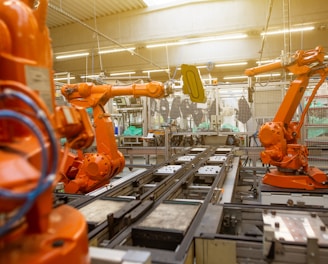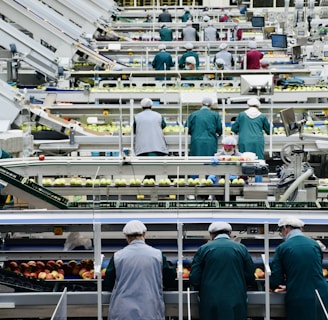Still Doing It Manually? Here’s Why Industrial Automation Isn’t Optional Anymore
Discover how industrial automation, AI, and predictive maintenance can eliminate manual workflows, reduce downtime, and boost smart manufacturing efficiency.
Venkata Ram C. R.
6/13/20253 min read


Picture this: It's a Monday morning at a mid-sized manufacturing unit. Machines are humming, but half the processes still depend on handwritten checklists, clipboards, and the guy who knows which button to push "just right" to make the system work. Sound familiar?
If your plant still relies heavily on manual workflows, you're not just behind the curve—you're setting yourself up for wasted time, inconsistent quality, and unnecessary costs. In 2025, automation is no longer a luxury reserved for tech giants. It's the difference between surviving and scaling.
Let’s break down why it's time to say goodbye to manual mayhem.
Manual Workflows = Bottlenecks Everywhere
Whether it’s quality checks, machine maintenance, or inventory logs, manual processes slow everything down. You’re relying on human memory, handwritten notes, and repetitive data entry. It’s not just slow—it’s risky.
One missed inspection, one misplaced record, and boom—you’ve got a compliance issue or a production delay.
With automation, these checks and updates can happen in real time. Systems log everything. Alerts are generated automatically. Errors are flagged instantly. No more running behind problems.




Predictive, Not Reactive
Still fixing machines after they break? Welcome to the old world.
Predictive maintenance uses sensors and data analytics to monitor equipment health and predict failures before they happen. That means less downtime, fewer production interruptions, and major cost savings.
In today’s landscape, waiting for a breakdown to act is like waiting for a fire to install sprinklers.
Automation Doesn’t Kill Jobs—It Reskills Them
One of the biggest myths? That automation will replace all human workers. In reality, it removes the repetitive, unsafe, and error-prone tasks, so people can focus on higher-level decision-making, supervision, and innovation.
From smart factories to IIoT-powered supply chains, companies are investing in training their workforce to collaborate with technology—not fear it.
Signs You’re Behind on Automation (And It's Costing You)
● Production delays are common
● Quality issues keep recurring
● Inventory mismatches happen often
● Energy bills are high with no real explanation
● Compliance audits feel like nightmares
If these ring true, chances are, manual workflows are clogging your operations.
So What’s Holding You Back?
Usually, it’s one of three things:
"We’ve always done it this way." — Until a competitor does it better, faster, and cheaper.
Fear of complexity. — But today’s automation platforms are modular, scalable, and incredibly user-friendly.
Upfront investment worries. — Fair. But the ROI on reduced downtime, fewer defects, and faster throughput makes it a no-brainer.
Final Thought: Automation Isn’t Just a Tech Trend—It’s a Business Imperative
The factories that thrive tomorrow are the ones upgrading today. So ask yourself: Are you optimizing your plant’s full potential? Or are you still relying on whiteboards, walkie-talkies, and crossed fingers?
The future of manufacturing is digital, connected, and automated.
Ready to plug in?
Machines That Think, Learn, and Adjust
Modern automation isn’t just about replacing labor with robots. We’re talking about intelligent systems that learn from data and adapt over time.
Think of a robotic arm that detects wear on its own parts and signals for maintenance before it breaks down. Or an AI-based quality control system that visually inspects every product in real time, catching micro-defects no human eye can see.
That’s not science fiction. It’s already being used in industries from automotive to FMCG.
Real-Time Dashboards > Paper Trails
Imagine being able to monitor your entire plant’s performance from a single screen. From energy usage and machine uptime to product throughput and error rates.
No more waiting for end-of-shift reports or manually compiling data from ten different departments. Dashboards update in real time, giving you the power to make decisions on the fly.
That kind of visibility isn’t just nice to have. It’s how modern manufacturers stay agile.
